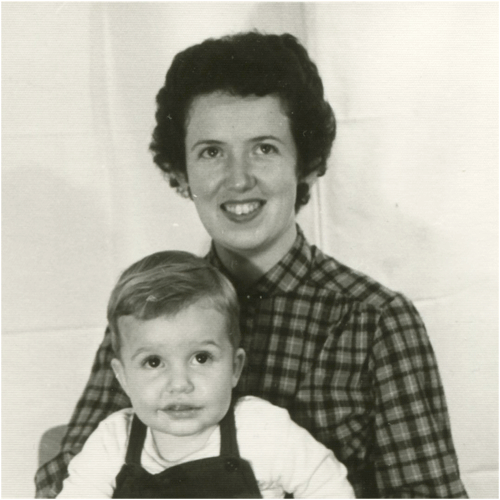Very few violinists in my photo collection wear cowboy hats and neckerchiefs. Most are dressed in either a white tie and tailcoat or a long white gown. This postcard of "Cliff" on W.S.B.A. Heard Daily-- 8:30 A.M.-3:30 P.M. offers an alternative image of a fiddle player's attire with his very American western cowboy costume. The caption links him with WSBA, which is spelled curiously and incorrectly as an abbreviation, was an AM radio station in York, Pennsylvania owned by the Susquehanna Radio Corporation, a division of the Susquehanna Pfaltzgraff Company, a kitchenwear company, which ran WSBA radio from 1941 until 2005, when it was taken over by a national radio corporation. If that schedule is right, "Cliff" seems to have worked long hours fiddling around at the station, but at least he took time to sign the postcard.
I did not figure out Cliff's real name until I found this second postcard and recognized him in this quartet of cowboy musicians.
Cliff is standing with his compadres of the 101 Ranch Boys, Geo. Long, Andy, and Smokey. This band with an accordion player, a violinist, a guitarist, and a double bassist began performing regularly on WSBA radio in York, PA sometime in the early 1940s. They got their start in Kansas City, KS playing for dance halls and radio there, but moved to York presumably on an attractive offer from Mr. Pfaltzgraff to bring their western swing style music to the East. The musicians names were George Long, accordion; Cliff Brown, violin; Andy Reynolds, guitar; and William (Smokey) Roberts, bass.
According to this bio, Cliff Brown was Cherokee (or Ponca according to this other website) and the name of the band came from a suggestion of his mother who was born on the 110,000-acre Miller Brothers 101 Ranch in what was then called the Indian Territory of Oklahoma. The Miller Brothers had a neighbor, Pawnee Bill, who was the colorful star of a traveling cowboy show in the 1890s. In 1907 they tried to emulate his success with their own 101 Ranch Wild West Show. Unfortunately the three Miller Brothers were late in the game, and faced fierce competition from established wild west and circus shows, as well as the new age of cinema. After a disastrous tour of Europe, when their horses and wagons were confiscated for the war effort and their Indians arrested as spies, they returned to Oklahoma in 1916 and two of the brothers quit show business. However one obstinate brother carried on a smaller show for another decade until 1927. Though their land did have oil, the brothers had leased the oil rights and never realized the fortune that came from the oil boom. By 1932, after two brothers had died in tragic accidents, the remaining Miller declared bankruptcy.
So when Cliff, Andy, George, and Smokey named their band after this ranch, they were taking advantage of a celebrated name which even people in Pennsylvania would have heard of. Since the Wikipedia entry has this great panoramic photo of the Miller Brothers 101 Ranch, I include it here to give some impression of its size and extravagance. Like much of the old west, it was destroyed by fires, banks, and legislatures and nothing remains except for a roadside plaque.
>click the image to expand<
| Miller Brothers 101 Ranch Source: Wikipedia |
After moving to York, Cliff and the 101 Ranch Boys added another musician, Leonard T. Zinn, on electric steel guitar. They made some recordings for Columbia Records and moved up the showbiz ladder of success to have their own radio show on the ABC network. In 1949, Billboard magazine ran this advertisement that promoted them along with the hottest new names in folk and country records. The 101 Ranch Boys had a new jukebox hit with their song Two Cents, Three Eggs, And A Postcard. On the B side was Bluebird On Your Windowsill.
 |
| Source: Billboard July 16, 1949 |
The 101 Ranch Boys were part of the first postwar wave of country and western artists that helped define this genre of popular music. Initially it was in radio, and then in records, that they found their audience. The group seems to have disbanded sometime around 1957-59. According to a comment from his son on a blog about the band in York, PA history, Cliff Brown died in 1989
The band's full discography includes a lot of other interesting titles like – I'm Trying To Keep Mother Warm, and An A-Bomb Of Bibles. But perhaps their best classic song was this one – Beer Bottle Mama.
Real Honky Tonk music.
> <
> <
This is my contribution for Sepia Saturday.
Click the link to see what else is on the play list.
>>> <<<
A Special Birthday Bonus
Another year marks another milestone as my father now counts 85 candles on his birthday cake this week. As long as I can remember, I have looked into his camera lens; watched him magically reveal images in a darkroom developing tray; and admired thousands of moments he has preserved in photographs. They record a lifetime of adventures as a soldier, a boater, a son, a husband, and a dad. I don't believe I could have become a collector of photographs without the inspiration of his passion for photography and enthusiasm for cameras. Thanks, dad.
Many years ago in France, a young Lieutenant Russell E. Brubaker took his new camera and tripod and made a series of homemade fotobooth images. Later there would be many more wonderful photos, but these first photos deserve to be embellished with 21st century digital technology and displayed on my internet photo gallery. Here are three of his best.
Happy Birthday, Dad!
There might be cuter babies, but none so lucky to have such a beautiful mom and handsome dad.
 \
\



































